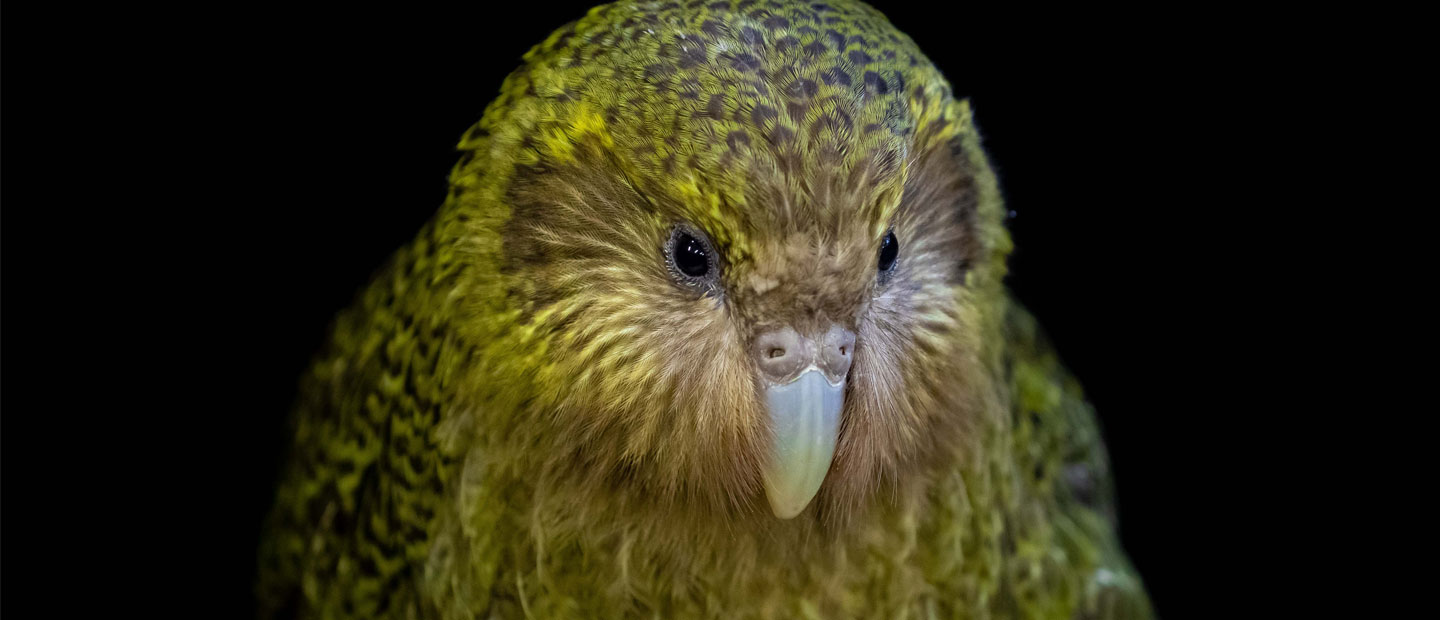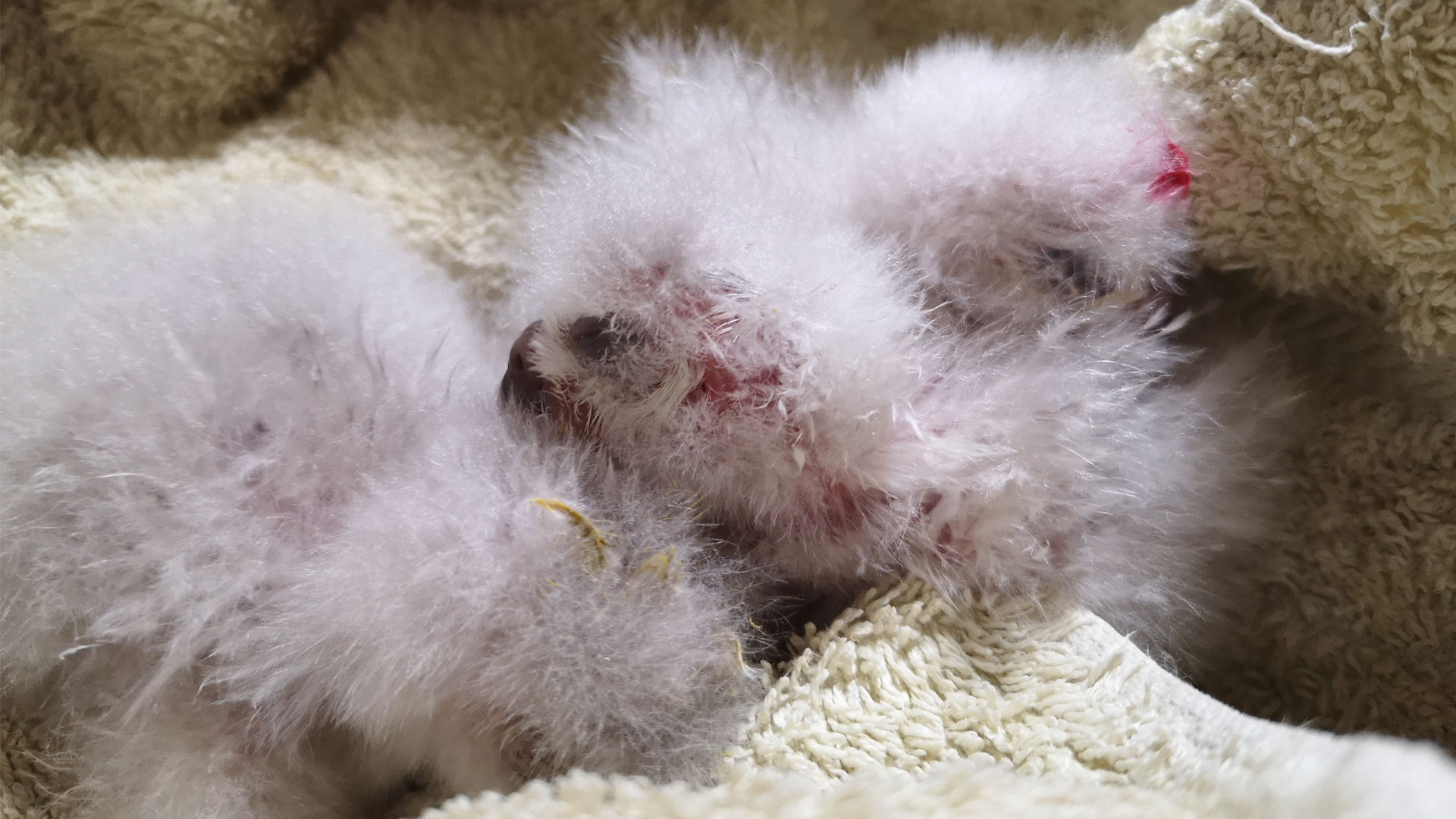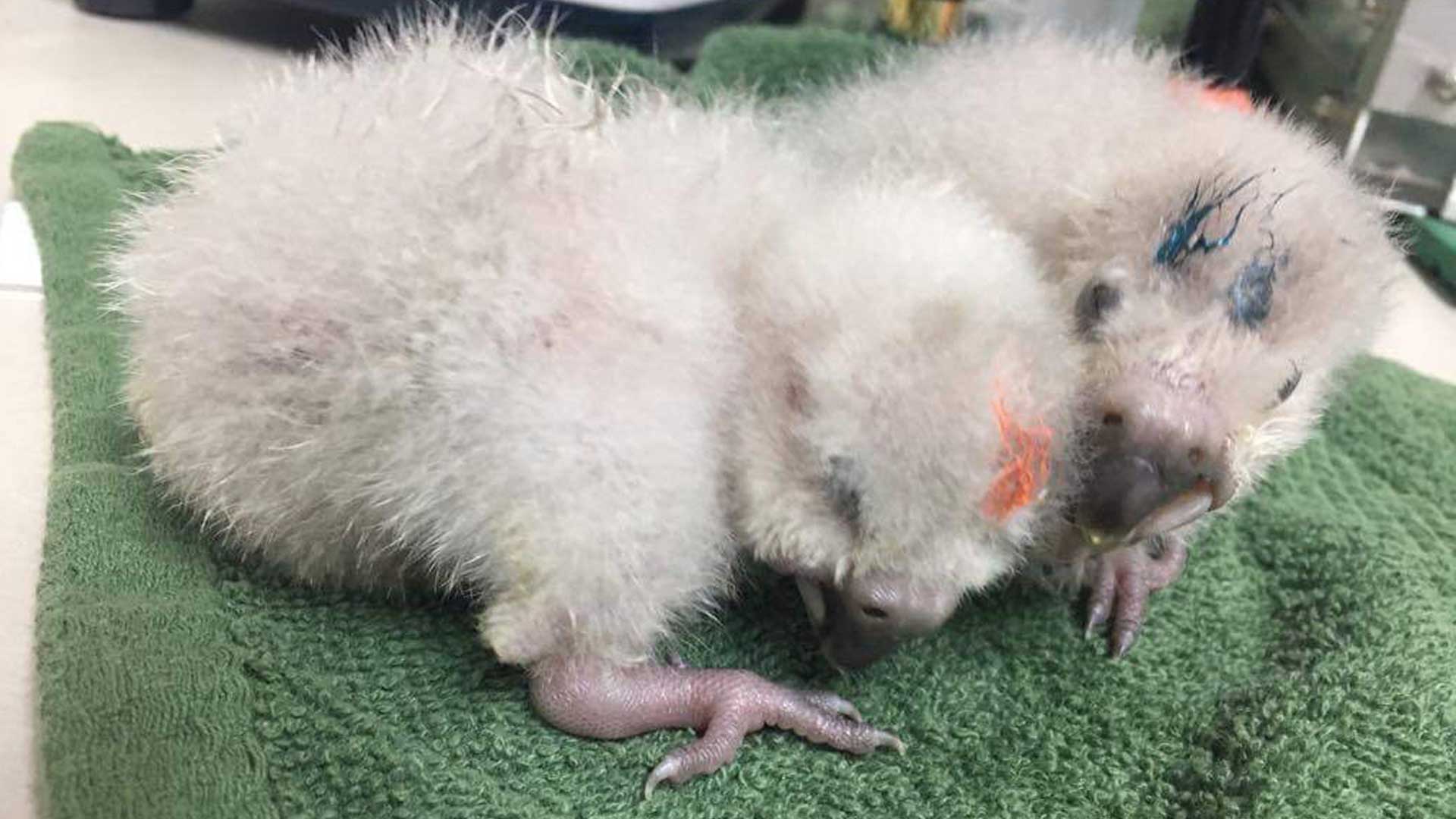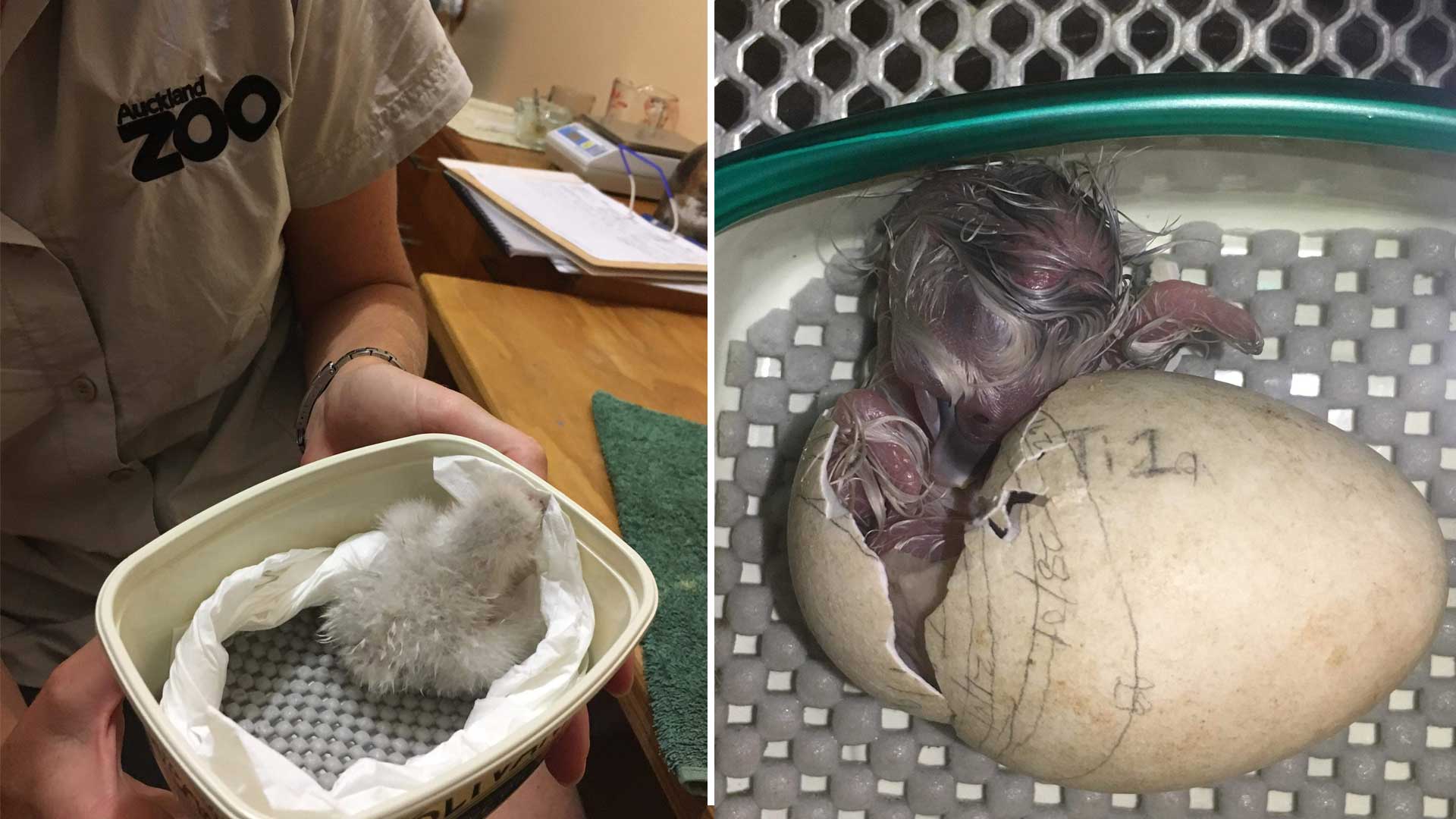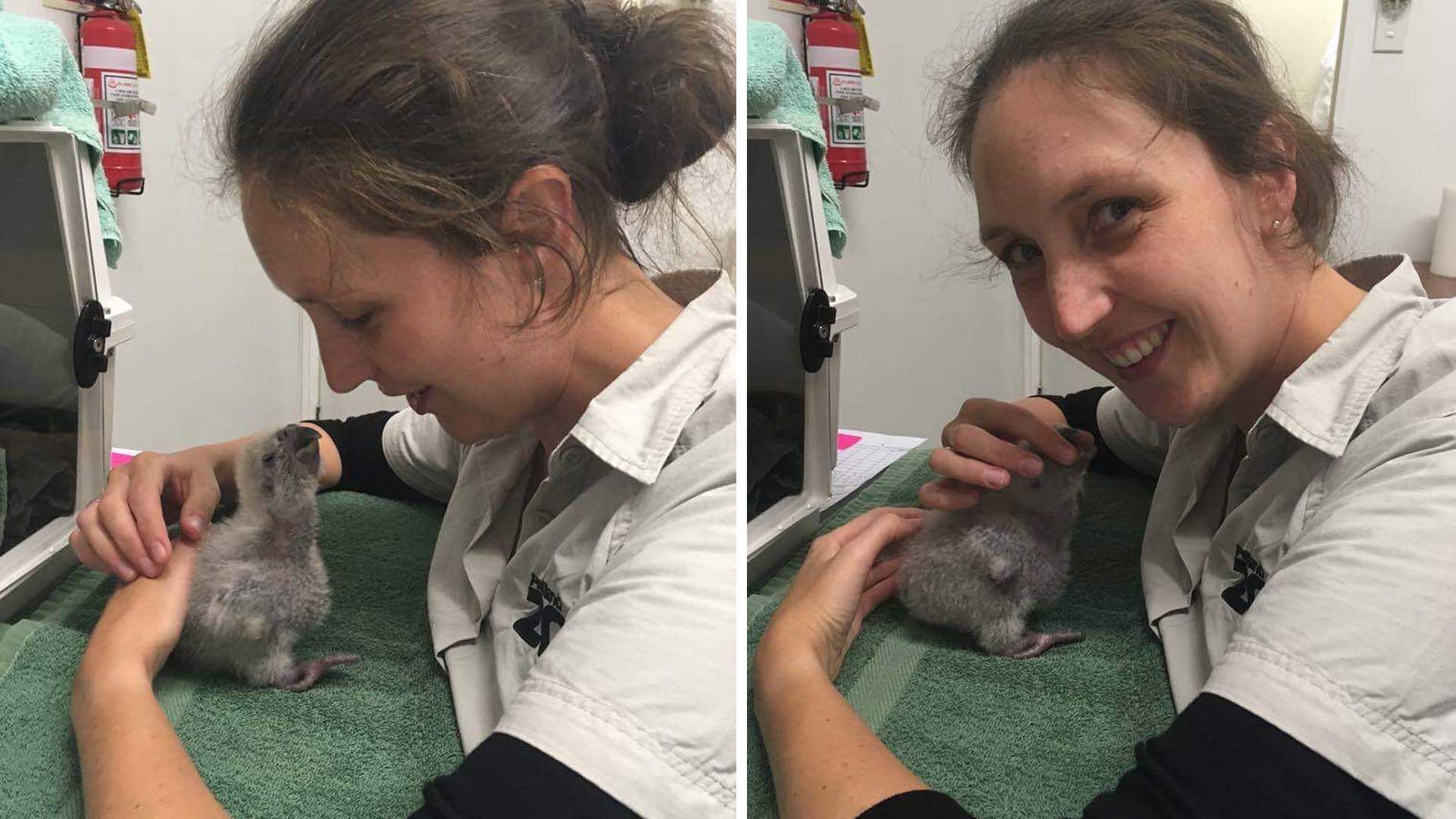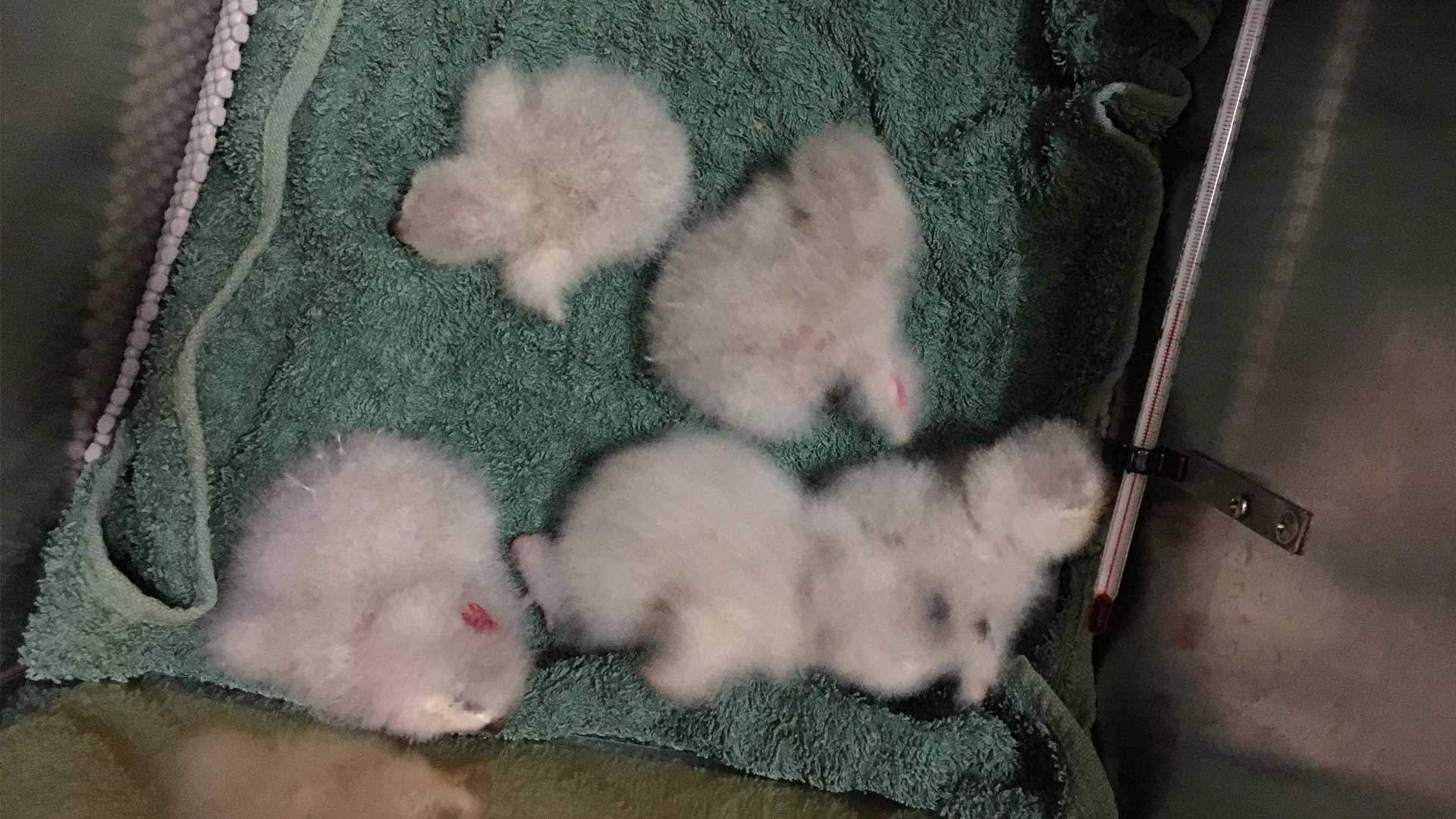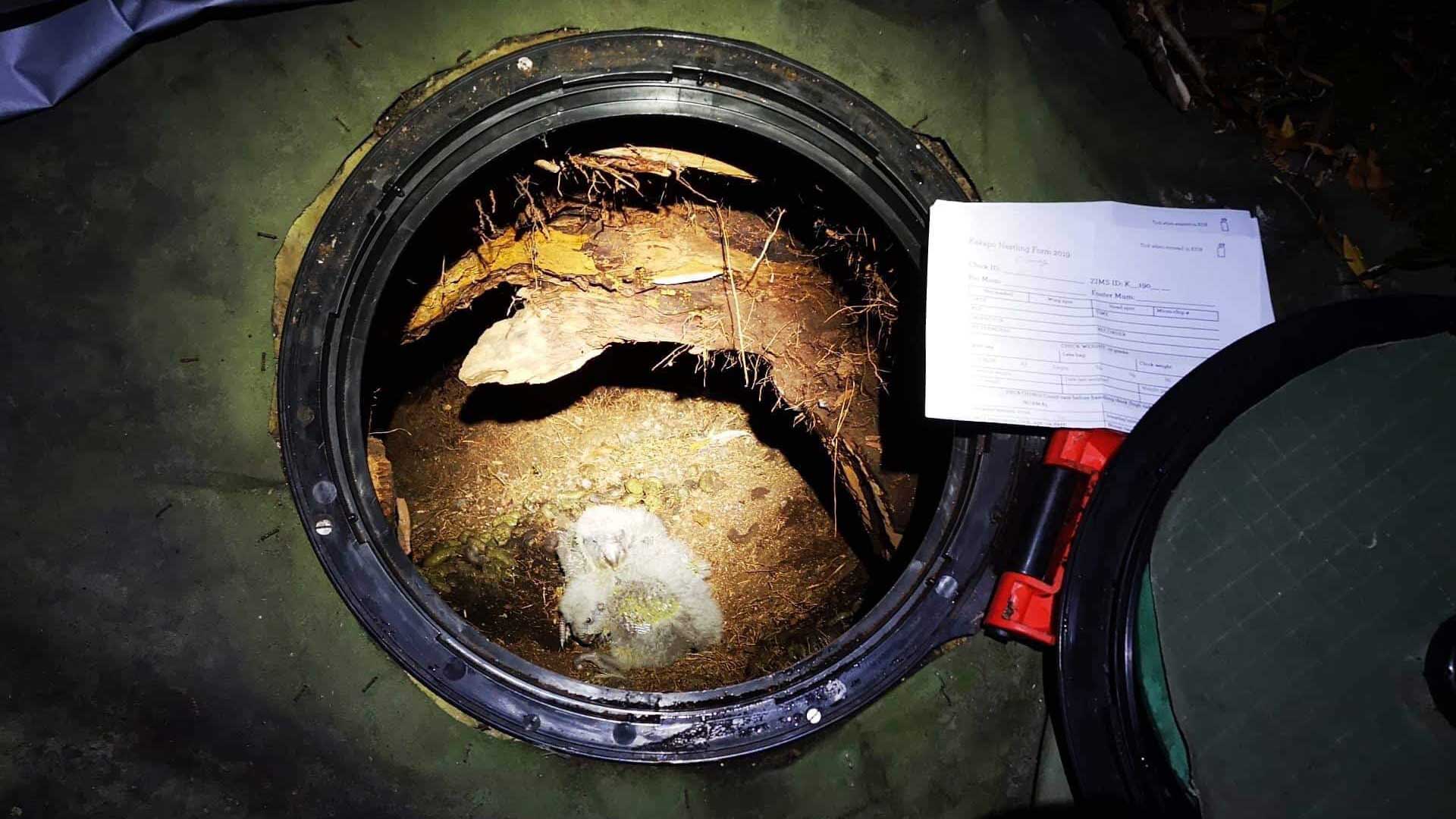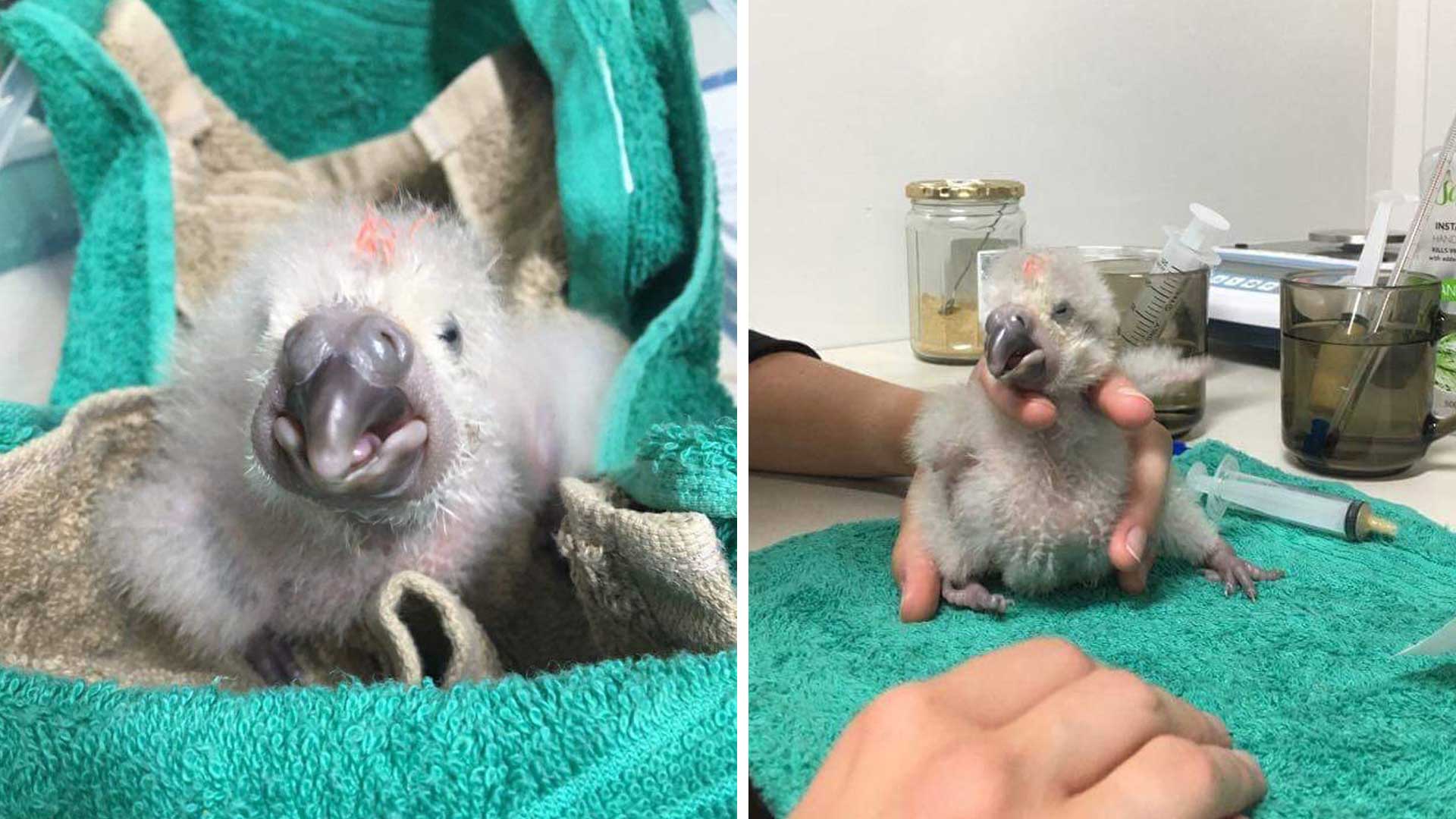2019 was the first breeding season a ‘double clutch’ had been attempted with kākāpō. This means the mother would lay an egg, which would then be pulled by staff members and artificially incubated, which forces the mother to go and mate again and lay a second nest. It’s the best option to suddenly double the number of chicks in one breeding season, which for a population that was less than 200 couldn’t be any more crucial. As bird keeper Catherine Francescon says ‘and that’s exactly what happened’.
When one of those artificially incubated eggs hatches, the ultimate goal is to get it back out to mum at the nest, as parent-reared gives the chick the best chance in the wild. Sometimes there wasn’t an option to parent-rear because their either wasn’t a nest ready for the chick to go to, or veterinary staff may make the call to hand-rear a chick if there were any medical complications. In that case there was an entire hand-rearing centre set up first at Dunedin Wildlife Hospital, and then in Invercargill where chicks would be reared for the first 70-80 days of their lives, plus there was the option to hand-rear chicks on the island, sometimes only for a matter of days or weeks – each situation had to be looked at on a case-by case situation.
With every breeding season, a small number of deaths is expected, and normal. And as our head of Veterinary Services Dr. James Chatterton says, “it became really obvious in April that we were dealing with something abnormal”. Chicks were being sent off the island as more and more of them were found to be losing weight, unwell, and unusually found to have aspergillosis.


